Shimano SPD vs SPD-SL pedals: Understanding the differences
What are they, how do they differ and which do you need?
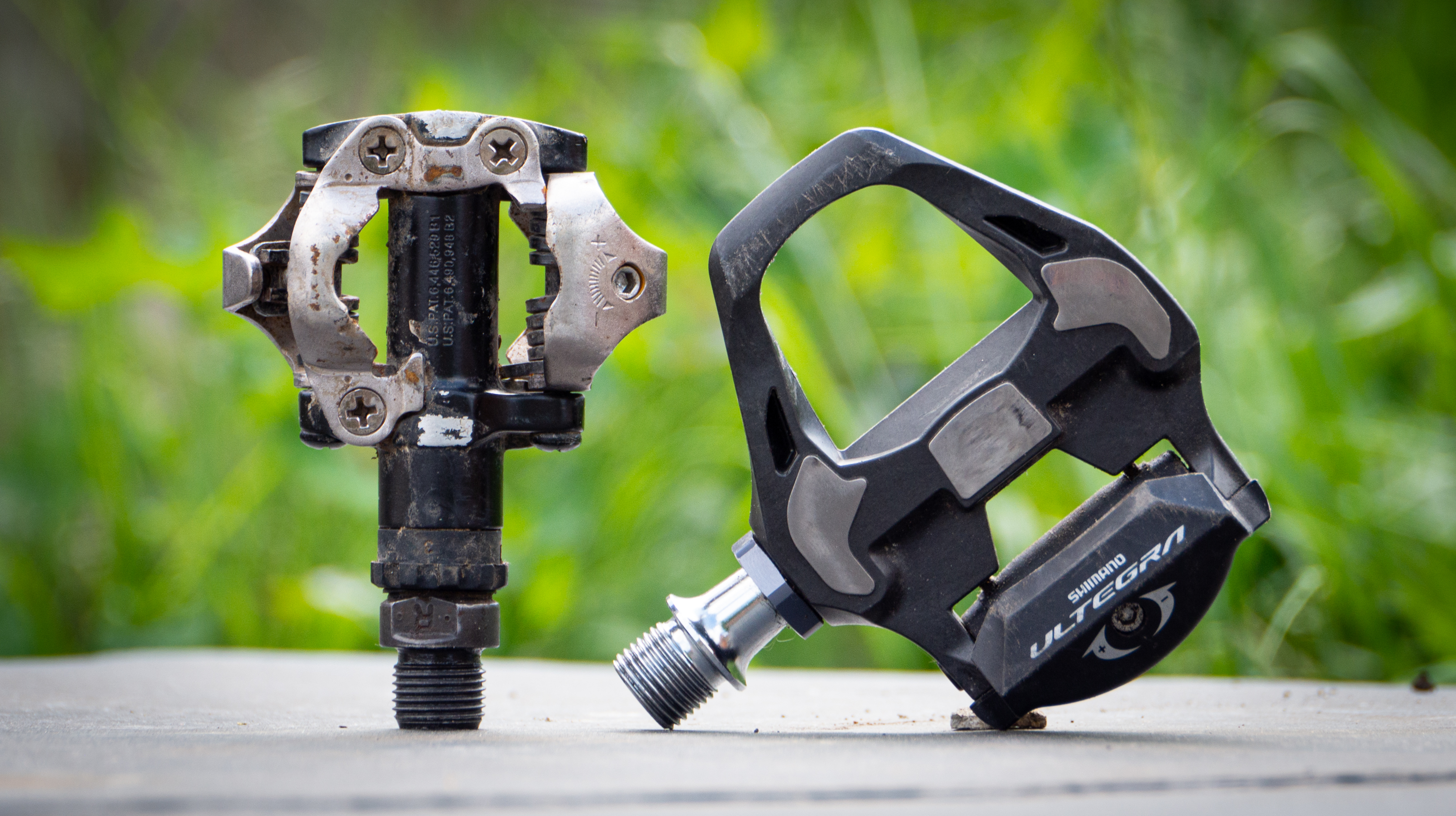
Shimano SPD and Shimano SPD-SL are both clipless pedal systems, which are broadly aimed at off-road and road cyclists respectively. Although the SPD acronym - Shimano Pedalling Dynamics - originated from Shimano, it has become a generic term for similar pedals from other manufacturers, in the way that ‘Hoover’ largely usurped ‘vacuum cleaner’. There’s a look at other similar pedals later on.
Before clipless pedals, cyclists looking for the efficiency of a solid connection to their bike would usually race using flat cage-type pedals, with a springy metal toe clip on the front and a strap to fasten their foot within it. Shoes could have a slot, which located on the raised rear of the cage, and getting in and out of toeclips was a fiddly process. In the event of a crash, feet often remained stuck in the pedals.
Clipless pedals improve on this with a specific cleat bolted on to the shoe’s sole, which locates on the pedal body, and is held firmly by a sprung mechanism. Nowadays, all of the best road bike pedals are clipless, and it's in this category that you'll find SPD-SL pedals. Likewise, most of the best gravel bike pedals are clipless too, but more often in the SPD format, but what are the differences?
We've covered the pros and cons of SPD pedals in more depth, where we briefly touched on the differences between SPD and SPD-SL, but here we'll dive deeper into that section.
Differences between SPD and SPD-SL
What are they, what do they look like, how do they attach?
Shimano Pedalling Dynamics - or SPD - pedals were introduced for off-road and leisure cycling, followed later by the road-oriented SPD-SL, where SL stands for Super Light. SPDs are still mostly used for off-road cycling, such as mountain biking, gravel cycling and cyclo-cross, but they make a lot of sense for other uses too.
Small, metal SPD cleats have a two-bolt fixing to keep them solidly attached to the shoe, whereas the larger, plastic SPD-SL cleats use a triangular three-bolt arrangement. Some shoes have both two- and three-bolt fixings on their soles, but many are designed specifically for one type or the other.
The latest race content, interviews, features, reviews and expert buying guides, direct to your inbox!
The SPD story
Although the term clipless pedal was coined by the French Look company in 1984, the first clipless pedal was invented in 1895. Cinelli manufactured a little-known clipless pedal, called the M71 in 1971, where an aluminium, and later, plastic cleat locked the shoe to a steel pedal body, with a hand-operated lever for fastening and release.
Look is recognised to have popularised the concept when releasing its ‘pédales automatiques’, drawing on knowledge gained from its ski binding business. The pedal subsequently became the PP65 in 1984, and, ridden by Bernard Hinault, was thrust firmly into the limelight, sparking the creative minds of some future competitors. Look’s original design did include a three-bolt cleat fixing, which has remained unchanged ever since.
Shimano partnered with Look in 1987, and the first clipless pedal, the Dura-Ace 7401 road pedal, was launched the same year, with Look-compatible three-bolt cleats and bearings and axles carried over from its 1984 7400 non-clipless pedals. The design evolved, and the minimalist SPD-R design was a step on the way to 2003’s SPD-SL, which has been the company’s premier road pedal system since.
Shimano debuted a smaller, two-bolt cleat pedal in 1990, along with a compatible M100 shoe, calling the system Shimano Pedalling Dynamics, or SPD. The M737 revolutionised off-road cycling and has evolved constantly since.
What are the benefits of SPD pedals?
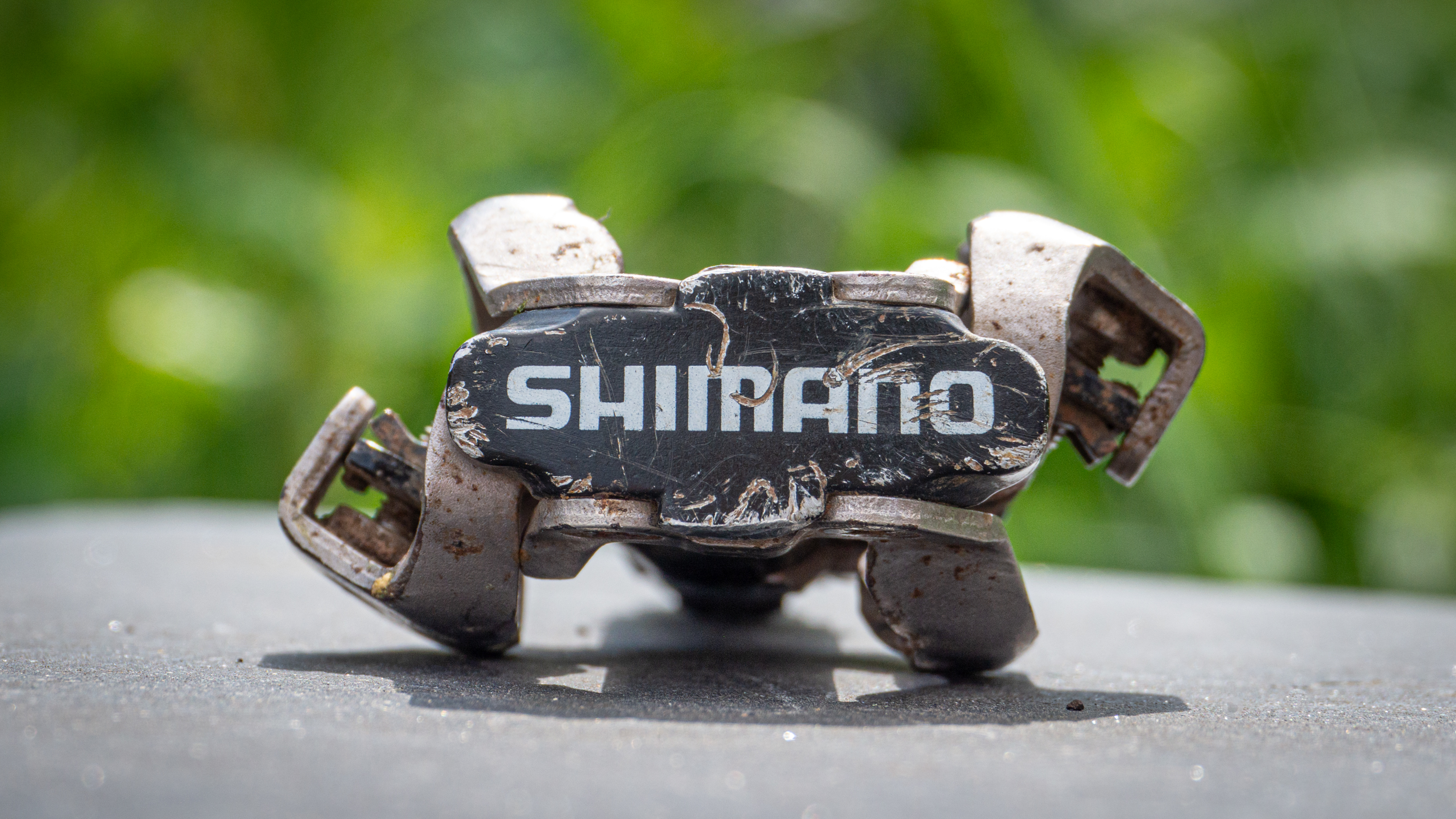
Simple two-sided engagement
Possibly the greatest feature of SPD pedals is their double-sided design, which is identical on each side. This takes the guesswork out of engaging with the pedal, as it’ll always be available.
Tension adjustment
The rear of the pedal includes a release tension adjusting screw, which can be adjusted to increase or decrease the ease with which you’re able to twist your foot to disengage. New users, or commuters, might want to set a lower tension than experienced racers, for example, to build confidence and allow easier disengagement.
It’s common for cleats to include ‘float’, which is the lateral amount of movement a heel can make through pivoting at the cleat, without the cleat unclipping from the pedal. This allows your foot to find its most natural position relative to the pedal throughout each pedal revolution, hopefully fending off potential knee issues.
However, of course, it's important to align the cleats as well as possible when fitting them to your shoe, to benefit from maximum efficiency and comfort.
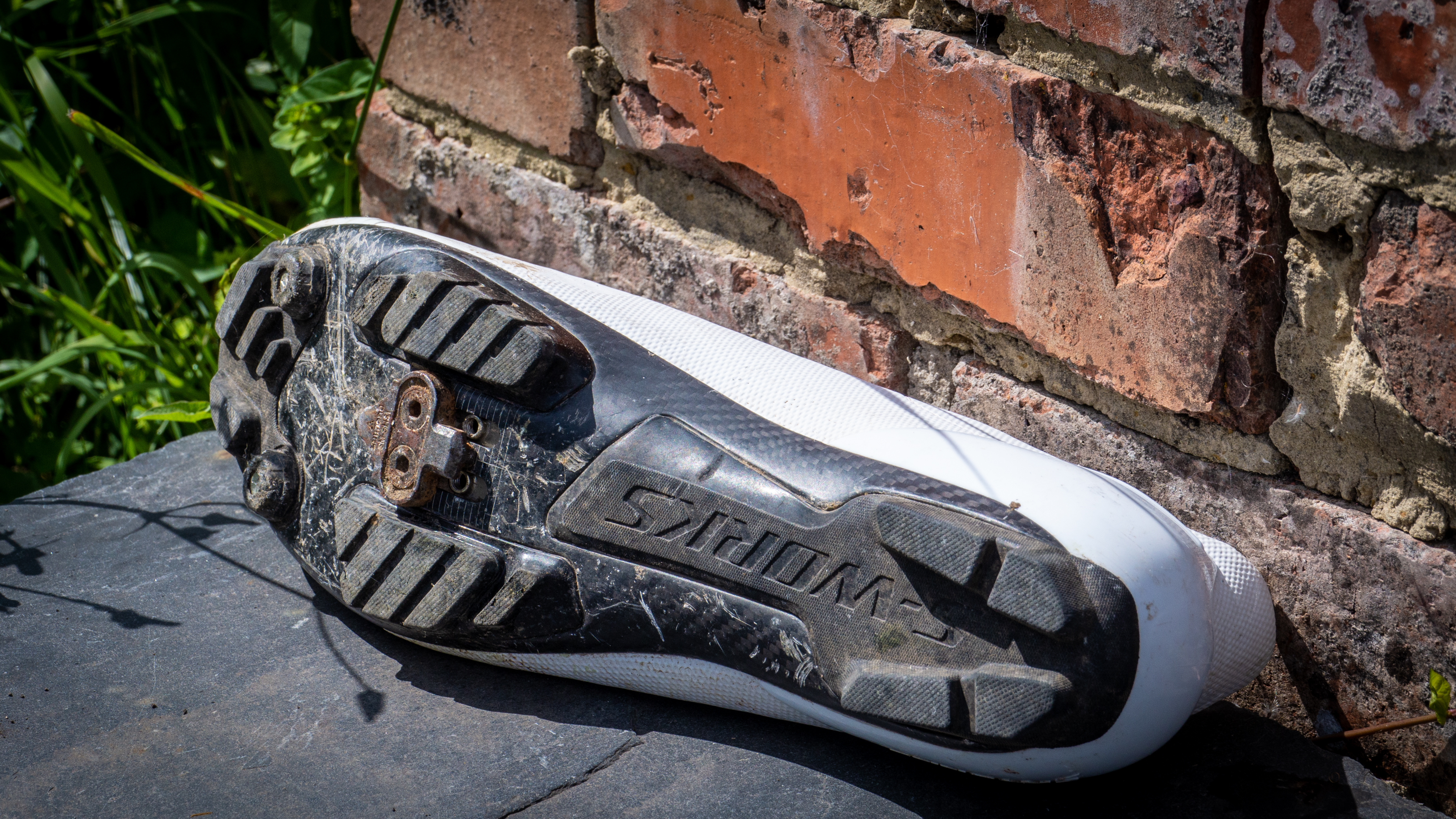
Cleats recessed into sole
The small, crucifix-style cleats of SPD pedals are (apart from a short-lived two-bolt road SPD pedal) intended to be used on a shoe with a walkable sole. This usually has grippy rubber tread all over, and a generous cut-out section around the cleat mount. When the cleat is installed, it is recessed within the sole, allowing you to walk normally, without fear of slipping.
This not only makes walking a realistic and safe option, but also protects the cleat from unnecessary damage. It’s superbly useful for commuters, and leisure cyclists, who almost always need to incorporate walking into their journey, and it makes any stops a simpler experience. What's more, SPD cleats are metal and are generally very durable, although very heavy use will see them wear faster.
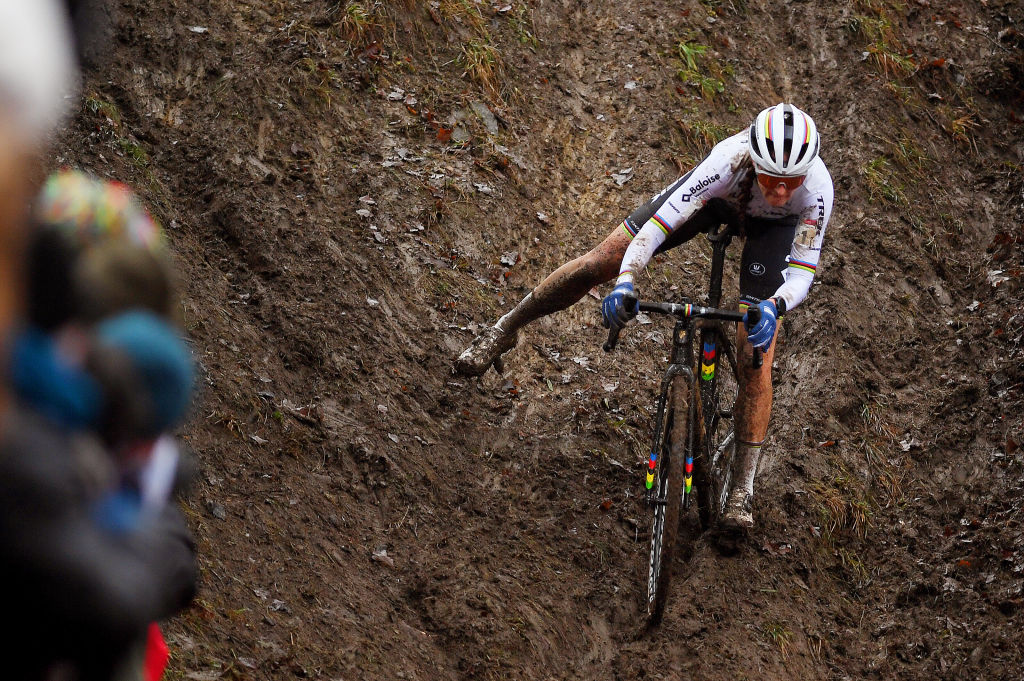
All-conditions durability
Because weather isn’t always dry, SPD pedals are designed to cope with mud and whatever nature puts in our way. Mud usually collects around the recessed cleats when you put a foot down, and that can make getting the cleat back into the pedal difficult. But SPD pedals are designed with space around and between most elements, so that mud is pushed through, allowing the cleat to engage.
This practicality makes SPD pedals ideal for mountain bikes, cyclo-cross bikes and gravel bikes, but also for winter road cycling, when slippery conditions underfoot and the likelihood of regular stops means that grippy footwear is welcome.
Usually compact size
Their compact size ensures that a typical SPD pedal doesn’t collect too much mud, and is less likely to affect ground clearance when cornering or turning. But some riders prefer a larger, grippy platform around the SPD mechanism, so it’s possible to use it effectively when clipped in or not. This can be especially useful in MTB gravity disciplines, commuting and leisure cycling.
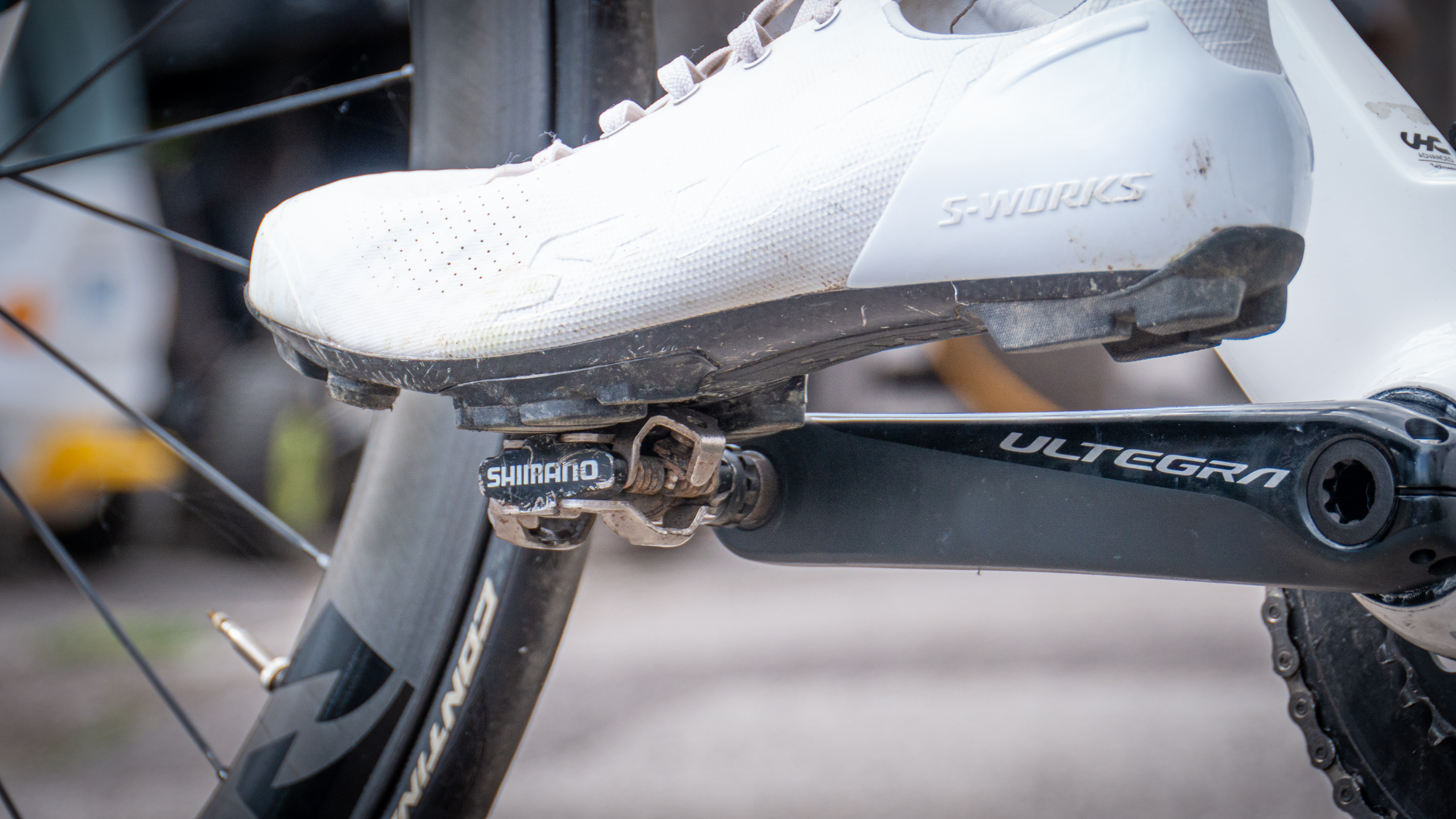
What are the benefits of SPD-SL pedals?
Larger pedalling platform
The most obvious difference between SPD and SPD-SL pedals and cleats is their relative size, with triangular SPD-SL cleats being many times larger than their SPD cousins. That additional size allows power to be transmitted more evenly from your foot to the bike, over a wider surface area, improving efficiency.
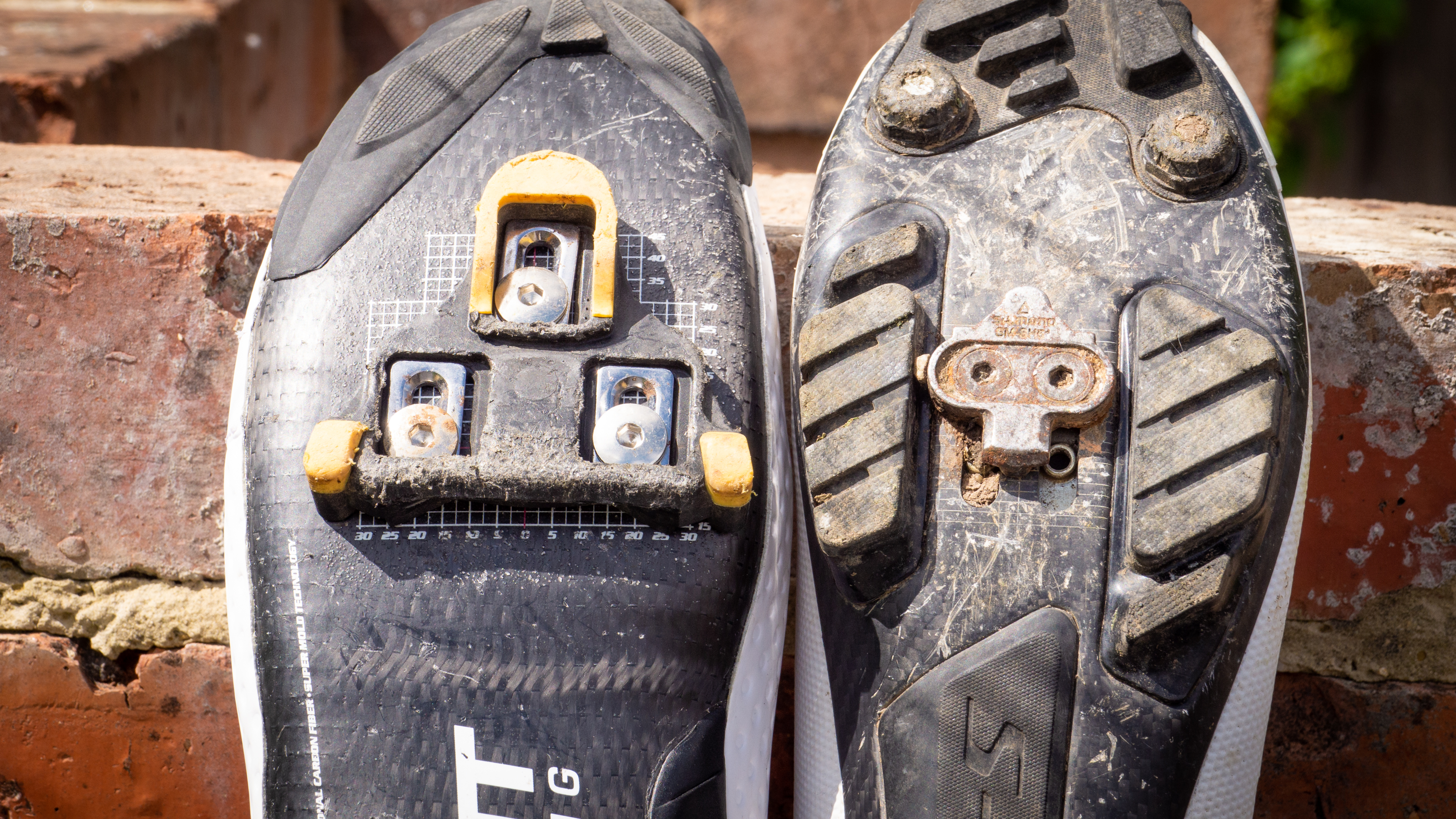
Road-focussed use
Designed specifically for road competition use, the single-sided SPD-SL pedals focus on ultimate performance on the bike, at the expense of practicality when off it. Their large plastic cleats project from the sole, at the ball of the foot, and so makes walking a more difficult affair.
Not only are they a little ungainly to walk in, and often prone to skidding on smooth surfaces, but excessive walking wears them out quickly, preventing them from working. Any foreign objects or mud can seriously affect their connection as well. Slip-on cleat covers are available, to protect the cleats and provide walking traction, but needing to carry them with you is less appealing for many riders.
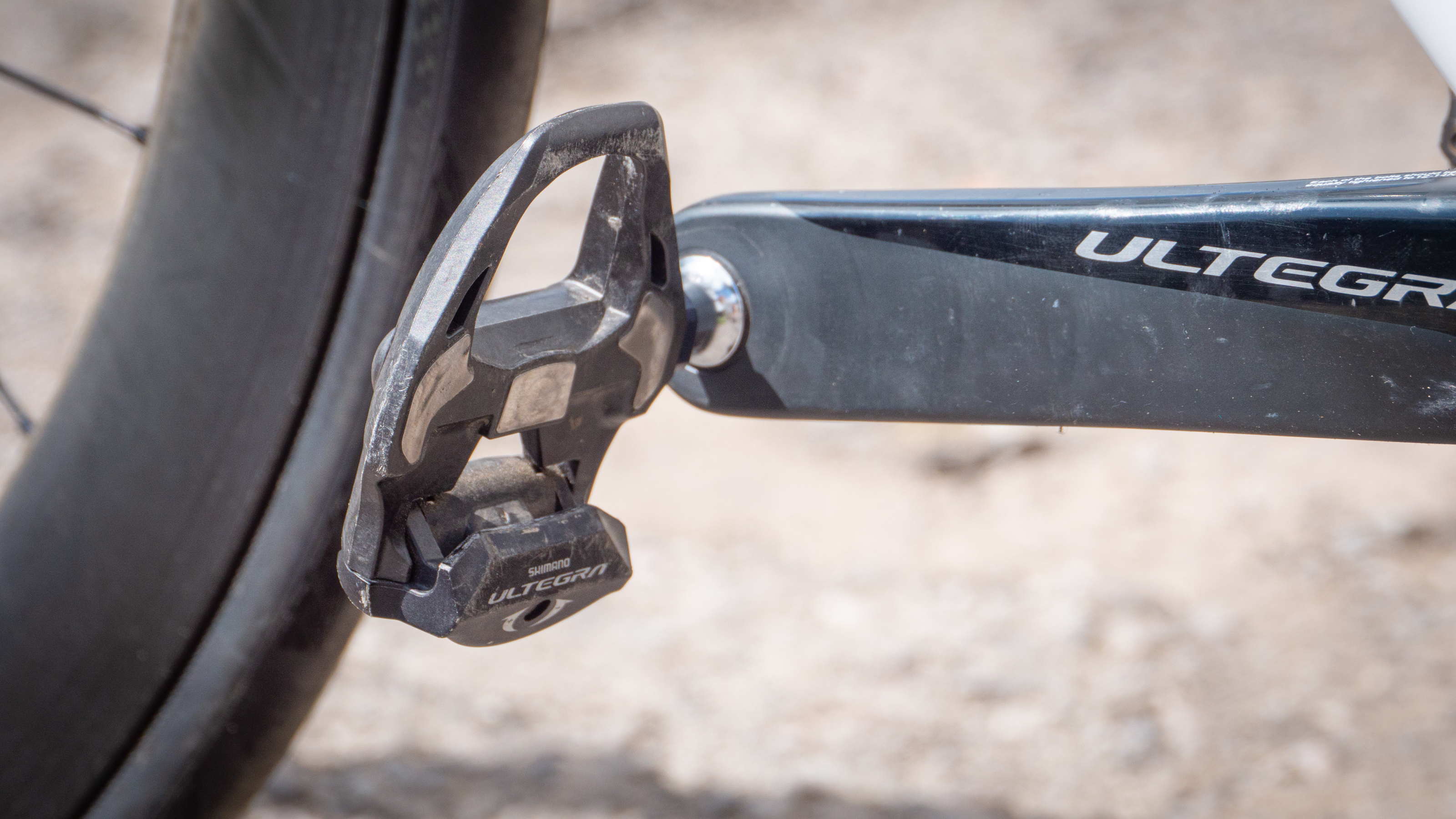
Pedalling and release options
As with SPD pedals, SPD-SL pedals usually come with cleats that offer several degrees of rotational ‘float’, to permit each foot to settle in a natural position. Shimano pedals are commonly supplied with yellow-coded cleats, offering six degrees of float, whereas red cleats have none, and blue cleats just two degrees.
SPD-SL pedals also include a tension release screw within the back plate, allowing you to customise how easy or difficult it will be to disengage from them.
Because they’re single-sided, you must always present your shoe and cleat to the correct side of the pedal every time. In order to assist this, the pedal is designed so that the bulkier rear portion always hangs down, leaving the front pointing up at an angle that makes it simpler to find. You have to locate the front of the cleat in the uppermost loop of the pedal body, and push forwards, so the pedal rotates until it meets the whole cleat. Then a firm push downwards should engage it properly.
Lightweight
The low profile of the SPD-SL pedal is designed for aerodynamics, low weight and maximum performance. As with most bicycle components, manufacturers try to shave weight wherever possible, and pedals are no exception. Materials used range from steel axles in the cheapest versions, to titanium, with pedal bodies made from aluminium, or light carbon fibre. When compared to their broadly equivalent SPD pedals in cost terms, a pair of SPD-SL pedals are usually around 50-100g lighter.
Other brand options
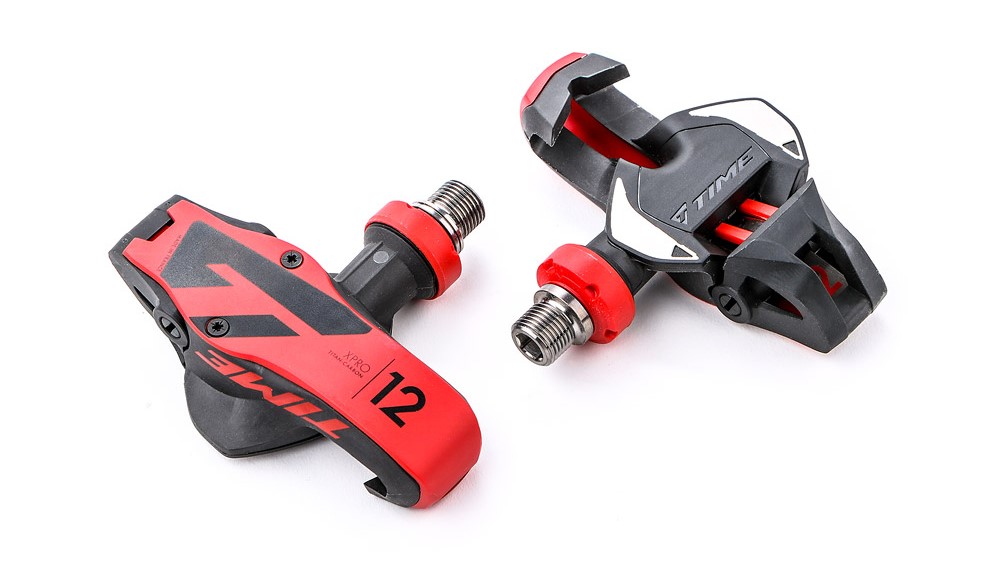
There are several other large manufacturers who offer competing two-bolt and three-bolt pedal designs. Some use proprietary cleat designs, but others are compatible with either Look or Shimano pedals as well.
French brand Time brought its TBT clipless road pedal to market in 1988, a year after Shimano’s Look collaboration. It was invented by the creator of Look’s original PP65 pedal. Time has evolved its concept successfully ever since, and the company was recently bought by SRAM. Off-road, Time’s ATAC pedals are much-loved by anyone looking for superb mud-shedding ability. Time cleats are not compatible with any others.
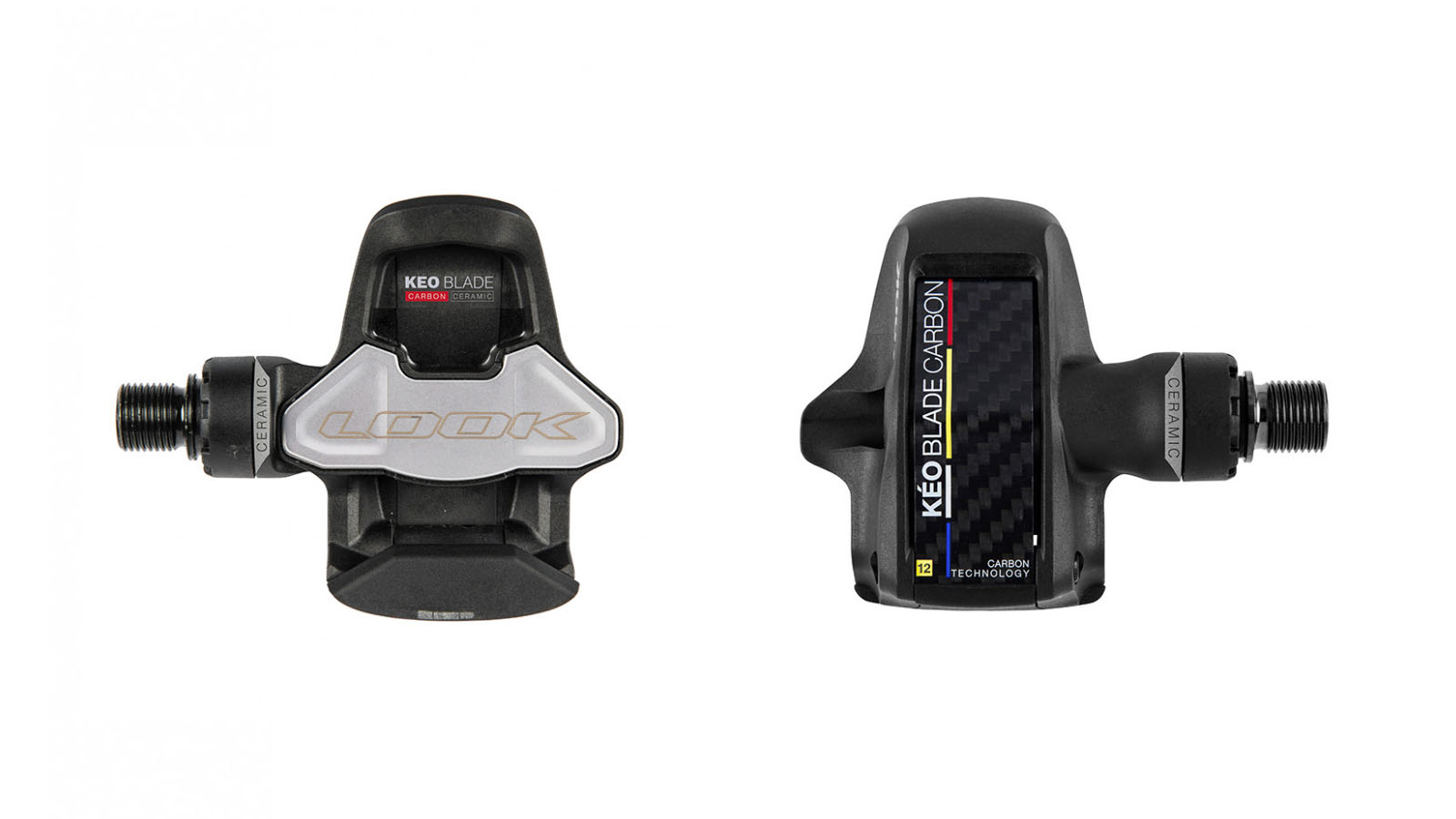
Look began the modern clipless pedal revolution, and still commands a large share of the road market. Since Shimano’s patent on two-bolt cleat pedals expired, Look and other companies have released their own SPD-compatible pedals, such as Look’s X-Track. Look cleats are incompatible with Shimano.
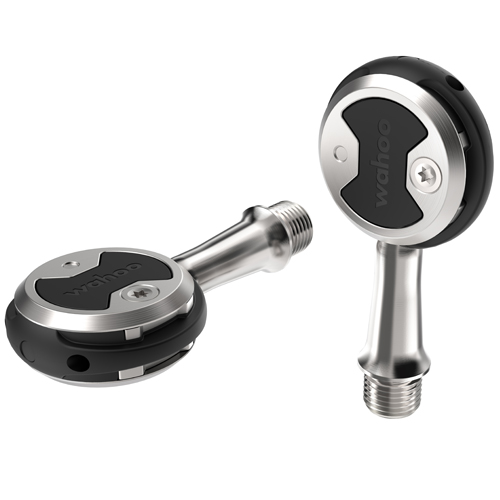
Speedplay’s X design from 1989 turned road pedal design on its head, with the circular pedal acting as the cleat, which locates into the mechanism bolted onto your shoe. Modern Speedplays require a four-bolt attachment, with specifically designed shoes, although a three-bolt adaptor is available for other more common shoes. The Speedplay design’s generous, adjustable float and unique feel still ensures a strong following, and the company was recently bought by Wahoo.
SPD pedals: Pros and cons
Pros: Simple engagement from double-sided design, recessed cleat permits easy walking, and they last well, versatile pedals for multiple uses, good muck-shedding ability
Cons: Not as light as the equivalent SPD-SL, smaller cleat focusses energy transfer on one small part of the shoe’s sole, difficult to ride in non-SPD shoes without a larger surrounding platform.
SPD-SL pedals: Pros and cons
Pros: Greater cleat size evens out power transfer over a wider area, very stable feel when engaged, low weight, proven 3-bolt design
Cons: Single-sided entry demands more care, walking on cleats wears them faster, limited walking traction.
- Josh CroxtonAssociate Editor (Tech)